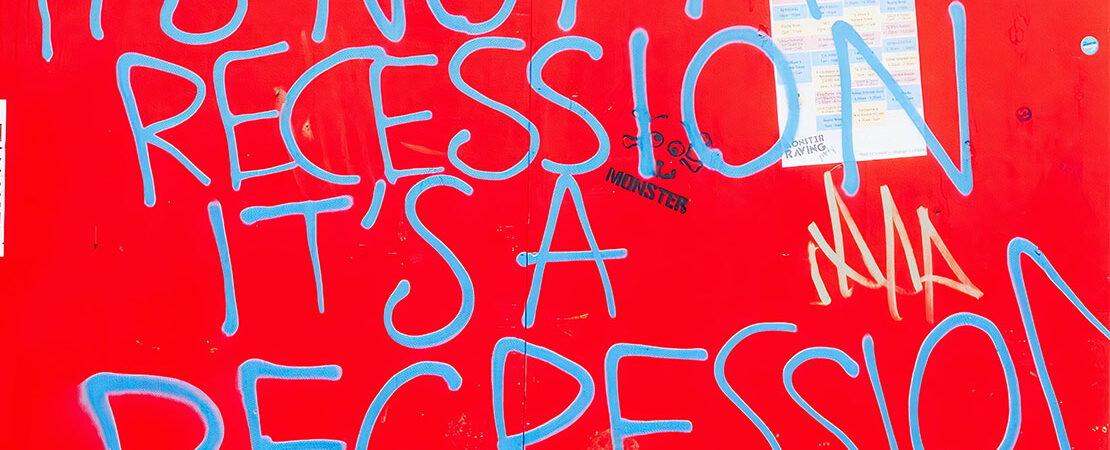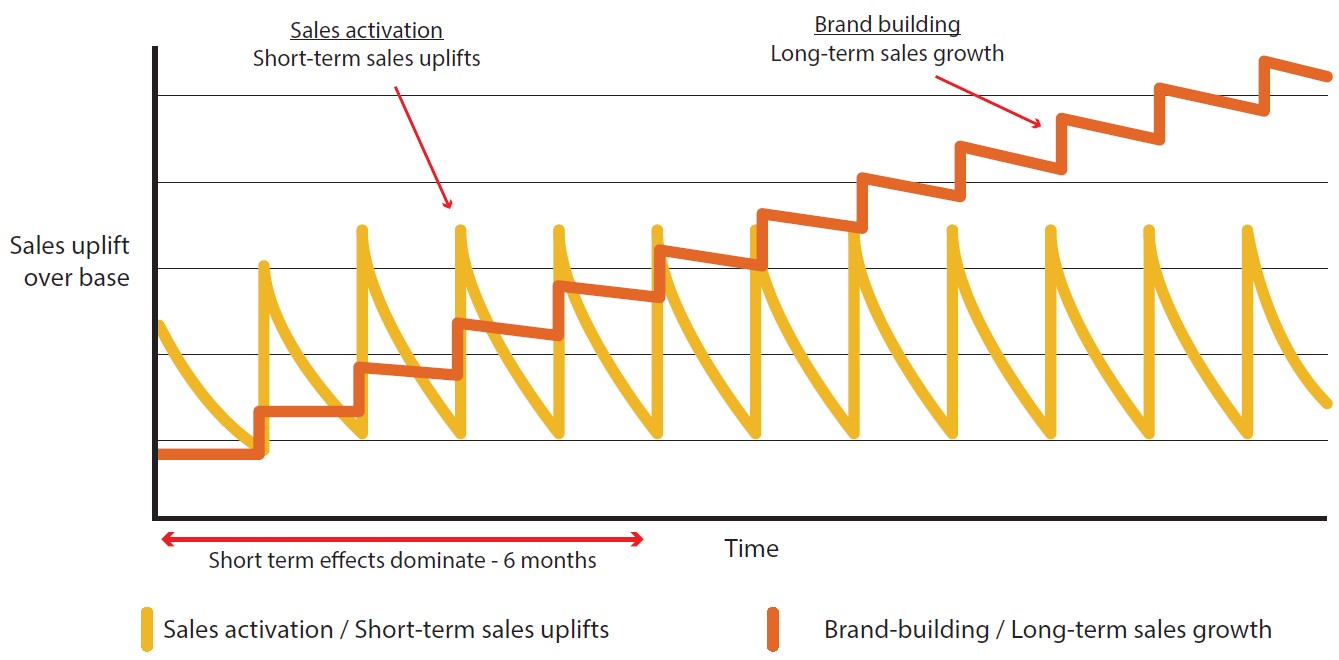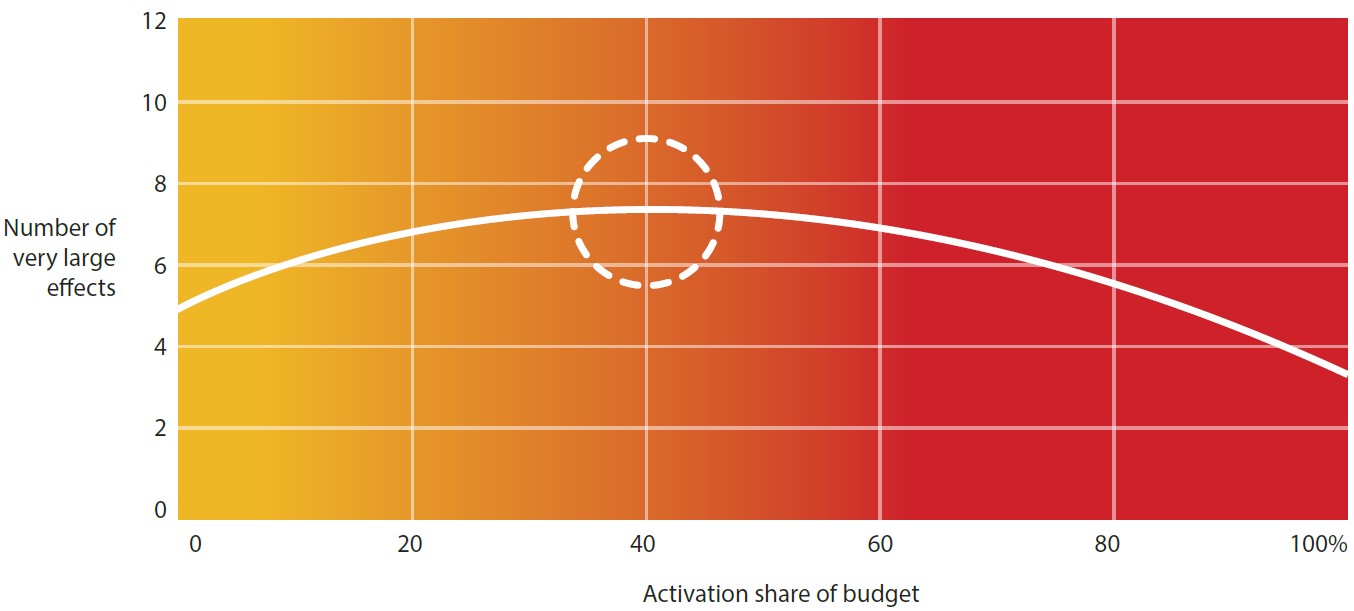What history teaches us about B2B marketing in a recession

In the film House of Gucci, Adam Driver makes an immediate impression as Maurizio Gucci, extravagant heir of the Italian luxury fashion brand.
The climactic melodrama takes viewers on a journey through the brand’s challenging history (WARNING: spoilers ahead), from its inception as a boutique fashion house in 1921 right up to the point that Maurizio Gucci was murdered by his wife’s hitman in 1995.
What the movie doesn’t reveal is how the Gucci brand managed to stave off just about every recession in its one-hundred-year history despite being the ninth most expensive fashion brand on the planet.
The secret is one of brand equity. Achieved in part because, when the times got tough, Gucci didn’t cut back on advertising spend. Instead, the company maintained its focus on raising awareness of the brand’s quality and heritage.
It turns out that recessions are a great opportunity to capture people’s attention.
“Never waste a good recession.”
Angela Ahrendts, CEO, Burberry
The Global Financial Crisis of ’08 – so popular it got its own acronym
Marketing costs money. And during a recession that money shouldn’t be squandered, especially on pointless BS like brand building.
Cutbacks are coming; brand building must go.
The financial crisis of ’08 serves as a harsh reminder of the consequences of recessionary cutbacks in the B2B marketing industry. It was the risk of redundancy that sticks firmly in my mind as our CEO announced a 30 per cent company-wide reduction in headcount. Thankfully, I made the cut.
Fourteen years later inside board rooms up and down the country, CEOs are repeating the same mistakes of the past by trimming their marketing budgets at a time when contrarian thinking can lead to improved business performance and competitive advantage.
The B2B Institute, a think-tank funded by LinkedIn, recently found that 96 per cent of B2B marketers aren’t thinking about the impact of their campaigns beyond six months. The focus is and always has been on short-term sales activation.
The problem is that short-term strategies only generate pipeline today. So what happens during an economic contraction when buyers stop responding to sales activation messages? The answer is shrinkage.
Short-term thinking: long-term shrinking
In the consumer sector, Ford and Johnson & Johnson have for decades studied the impacts of marketing on consumers.
An abundance of research from over sixty years proves that, although sales might dip during choppy periods of prosperity, marketing helps to maintain sales volumes and ultimately leads to higher sales growth when the recession is over.
Even more surprising is that products launched during a recession have higher long-term survival chances compared to the average newly launched product.
The first reason for this is that marketing costs fall in a recession, leading to less market noise and a higher share of voice for the remaining market players.
Second is product development and R&D spend which is often completely culled during economically hard times. It’s this widescale market frugality that causes a decline in the number of new products brought to market.
As a result, the few businesses still spending – we’ll call these the ballsy businesses – are able to:
- Stand out in the market
- Attract the best talent to develop the best products
- Source higher quality materials for a fairer price, leading to a better product outcome compared to the market average.
For most CMOs, the challenge is proving the effectiveness of their marketing department — usually a doddle as long as sales figures are in the green.
It’s during an economic downturn when things turn sour as falling sales heap extra pressure on CMOs to demonstrate why the company should continue to invest in dozens of marketing channels. Ordinarily, the first thing to go is above-the-line activity which, in today’s era of B2B marketing, consists of stuff like display ads, YouTube ads, and maybe TV or radio campaigns.
This sort of short-term thinking kills long-term performance, and there are several reasons why.
The importance of Share of Voice
In 1990 John Philip Jones published a research paper showing how a brand tends to increase its market share in proportion to the Extra Share of Voice it achieves.
In essence, the research highlighted why companies need to balance long-term brand building with short-term sales activation, even in times of economic turbulence. It challenged the notion that a brand should tie its marketing budget to its sales by allocating a certain number of pence or pounds from each sale towards marketing.

The metaphorical poker game
At a time when around a third of all UK brands will be holding back on discretionary spending, the latest data from Sapio Research suggests that only 24 per cent of UK B2B brands plan to stick to their planned budgets.
According to Sapio’s latest B2B Recession Barometer, 55 per cent of B2B brands say they are likely to reduce marketing spend over the next twelve months.
With 2022 looking like 1981 and 2008 all over again, businesses of all shapes and sizes are planning the idiot move of slashing marketing spend without any consideration for the future cost. If CMOs could see the long-term implications, would they really be so frugal?
The proof is written in ink. During the 1981 recession, companies that continued with their planned advertising investment saw 256% growth compared to the businesses that reduced their spend. In 2008, ballsy businesses that maintained their marketing spend achieved 3.5x higher brand visibility.
In this metaphorical poker match where everybody has the same hand, the players who pay to see the flop often win the game. For companies that lose their nerve, share of voice – and consequently market share – is diminished.
“Stopping advertising to save money is like stopping your watch to save time.”
Henry Ford
Why brand awareness counts in a recession
We often think of a brand as a set of visual assets. A catchy name, a sleek logo, a set of brand colours. But a brand is so much more than that.
Beyond creating awareness, a brand connects with customers on an emotional level by sharing values, memories and visions that convince them to feel a sense of loyalty.
Brand building is an extension of brand awareness. It’s a tool designed to create subconscious connections in customers’ minds.
You’d be forgiven for thinking that every successful B2B business focuses on brand building. They don’t.
In fact, a majority of B2B companies only focus on here-and-now sales activation strategies. The stuff that creates a short-term sales uplift: usually a sales message or offer.
There’s no doubt that sales activation strategies work. After all, why would so many CMOs plough so much time and effort into them if they didn’t.
The challenge for most CMOs seems to be understanding the fine balance between sales activation and brand building.
In a recent interview, marketing effectiveness expert Les Benet said:
“There are two ways to sell things. You can send out marketing activity that evokes an immediate response – Peter Field and I tend to call that activation. That doesn’t require building up long-term memories or doing much to change people’s minds. It’s just about evoking a response, and that can be a highly profitable and efficient thing to do.”
“But if you want long-term growth, what you’ve got to do is change people’s minds in some way. You’ve got to build up memory structures that will bias their behaviour into the future, and that’s a much more difficult and long-term job, because it involves training people’s responses in such a way that you not only influence behaviour now, but you also influence behaviour tomorrow, next week, next month, next year, and on into the future.
“Brand building is about building up these mental structures but, crucially, it’s still about behaviour. It’s about getting people to change their behaviour over the longer term. To put it in financial language, activation is about getting an immediate response and, ideally, an immediate sale but maybe nothing more. Brand building is about getting a long-term flow of sales, revenue and profit, now and into the future.”

Known by the marketing industry as the Godfathers of Effectiveness, Les Binet and Peter Field created a model for the brand building / sales activation conundrum which recommends that 60% of communications budget be dedicated to brand building, with the rest spent on activation. The B2B Institute suggests an optimal split for B2B marketers of 46% on brand and 54% on activation.

Rocky times ahead
Goldman Sachs, the Bank of England, and the OBR all predict that a savage recession is ahead of us. In these challenging times, the winners will be the ones who adapt with the times and think long term.
As B2B marketers we need to educate ourselves (and our colleagues) about how best to stay ahead of the curve, building strategies that don’t just cover the next three to six months but the next three to six years.
It’s time to step up. It’ time to think like Gucci.
Get in touch to discuss hiring me as your B2B marketing consultant.
